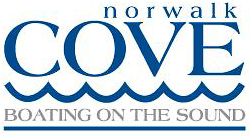Boating Safety - Fenders and Docklines
June 13, 2013 Notice: NOT Bumpers or Ropes ! Bumpers are for dinghies and strollers and a dockline (or any line on a boat) stopped being a "rope" the minute you walked out of the store.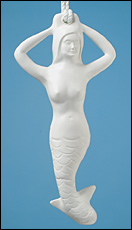 Seriously, walking the docks you can see a vast array of fenders and various docklines ranging from mermaid fenders, "hole on each end" spherical and "line through the middle" fenders along with docklines which range from 1/4" clothes line (REALLY !) to 3/4" color coordinated braided lines with spliced eyes.
So, what should you really be using to protect your boat ?
So let’s start with fenders. Based on manufacturer’s specifications and experience, the following chart shows the approximate (suggested) size. Remember, you can always go bigger !
Seriously, walking the docks you can see a vast array of fenders and various docklines ranging from mermaid fenders, "hole on each end" spherical and "line through the middle" fenders along with docklines which range from 1/4" clothes line (REALLY !) to 3/4" color coordinated braided lines with spliced eyes.
So, what should you really be using to protect your boat ?
So let’s start with fenders. Based on manufacturer’s specifications and experience, the following chart shows the approximate (suggested) size. Remember, you can always go bigger !
|
Boat Size |
Hole in each end or Line through the middle fenders |
Spherical Fenders |
|
20-30 ft. |
6.5” X 16” to 8.5” X 20.5” |
9” to 12” |
|
30-40 ft. |
10.5” X 27” to 13.5” X 35” |
12” to 15” |
|
40-50 ft |
13.5” X 35” to 18” X 50” |
18” to 24” |
|
50-60 ft. |
18” X 50” and larger ! or Custom inflatable fenders |
24” or larger |
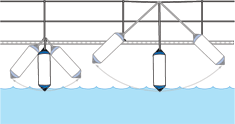 They must be set vertically to protect the boat, so lower them first to just touch the water and then pull them up two inches or so. Also when you leave the dock all fenders COME IN. Swing them up onto the boat still tied on or untie and stow them. Remember, leaving them down underway is sloppy seamanship and indicates to others you are a neophyte with no boating experience ! They (and I) will go to lengths to avoid you.
Can you use clips or hooks or one of the myriad fender hanging “thingies” available ? Well, yes, BUT you have far less adjustment and placement options with them. If you always do exactly the same thing with your boat and never go to different docks or raft up, OK. Otherwise, have your crew practice the two half hitch knot. It’s also the knot you should use to tie things to the roof of your car, on trailers or anywhere you have to cinch tight and tie off.
While you are practicing you knots, work on perfecting the Cleat Hitch…. Click Here
They must be set vertically to protect the boat, so lower them first to just touch the water and then pull them up two inches or so. Also when you leave the dock all fenders COME IN. Swing them up onto the boat still tied on or untie and stow them. Remember, leaving them down underway is sloppy seamanship and indicates to others you are a neophyte with no boating experience ! They (and I) will go to lengths to avoid you.
Can you use clips or hooks or one of the myriad fender hanging “thingies” available ? Well, yes, BUT you have far less adjustment and placement options with them. If you always do exactly the same thing with your boat and never go to different docks or raft up, OK. Otherwise, have your crew practice the two half hitch knot. It’s also the knot you should use to tie things to the roof of your car, on trailers or anywhere you have to cinch tight and tie off.
While you are practicing you knots, work on perfecting the Cleat Hitch…. Click Here
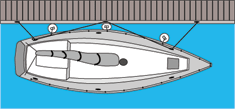
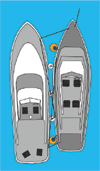 Docklines
Docklines, like fenders, should be appropriately sizes for your boat and made from an elastic material, usually nylon. Some braided lines are made from polyester, but polyester has less stretch than nylon. Avoid any aramid fibers or high strength- low stretch fibers with technical sounding names. Those lines are for racing sailboats, not docklines, no matter how colorful they are.
Plain old nylon resists UV exposure, has the right amount of stretch vs. tensile (breaking) strength, is fairly abrasion resistant and costs less. The stretch is necessary to absorb the shock loads that come when a boat surges or is hit with a blast of wind. Also avoid polypropylene, (like ski tow line) which has very low UV resistance, gets brittle and has low breaking strength and stretch characteristics. Nylon is the way to go.
Suggested Dockline Sizing
Docklines
Docklines, like fenders, should be appropriately sizes for your boat and made from an elastic material, usually nylon. Some braided lines are made from polyester, but polyester has less stretch than nylon. Avoid any aramid fibers or high strength- low stretch fibers with technical sounding names. Those lines are for racing sailboats, not docklines, no matter how colorful they are.
Plain old nylon resists UV exposure, has the right amount of stretch vs. tensile (breaking) strength, is fairly abrasion resistant and costs less. The stretch is necessary to absorb the shock loads that come when a boat surges or is hit with a blast of wind. Also avoid polypropylene, (like ski tow line) which has very low UV resistance, gets brittle and has low breaking strength and stretch characteristics. Nylon is the way to go.
Suggested Dockline Sizing
|
Boat Size |
3 strand Nylon or Braid |
|
up to 25' |
3/8” |
|
up to 35' |
1/2” |
|
up to 45' |
5/8” |
|
up to 55' |
3/4” |
|
up to 65' |
7/8” |
Categories: None
